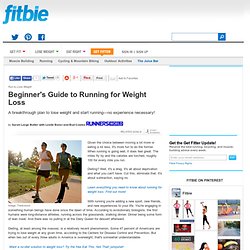

Začněte s během. Pár rad od trenéra Vládi Korbela. Právě je chceme provést jejich úplnými začátky.

Předcházet by jim měla lékařská prohlídka, absolvovat ji určitě musí lidé, kteří mají srdeční vadu, vysoký krevní tlak, prodělali infarkt, revmatismus, stenokardii apod. Když poté začneme se samotným tréninkem, držte se rady: pomalu, zvolna a zase zvolna. Když už jsme léta chátrali a tloustli, nejde to dohnat najednou, honem honem. Na začátku je dobré znát svou srdeční frekvenci v klidu, ráno, ještě když ležíte v posteli. (Když se totiž posadíte, tep se zvýší, postavíte-li se, míří ještě výš.) Své srdce si ještě prověřte stoupáním do schodů. Chůze po schodišti je nejjednodušším testem, existuje ale mnoho dalších, s podřepy, poskoky, výborný je dvanáctiminutový test podle Coopera a pochopitelně laboratorní testy, kde je vyšetřovaný napojený na elektrokardiograf, který stále registruje EKG. Pak můžeme jít rovnou na běh, který vždy začněte rozcvičením. Jogging Linked With Increased Life Expectancy, Study Shows.
Going for regular jogs could help you to live longer, according to a new study.

Researchers from the Copenhagen City Heart Study found that regular jogging adds years onto the life expectancies of both men and women. The optimal amount of jogging seems to be be one to two-and-a-half hours per week, spread out between two or three jogging sessions, the researchers found. The study was presented at the EuroPRevent2012 meeting in Ireland. "The results of our research allow us to definitively answer the question of whether jogging is good for your health," Peter Schnohr, chief cardiologist of the Copenhagen City Heart Study, said at the event, according to a statement. "We can say with certainty that regular jogging increases longevity. The study drew from data from the Copenhagen City Heart Study, which started in 1976 and includes data from 20,000 men and women ages 20 to 93.
Over a 35-year period, researchers found that 10,158 non-joggers and 122 joggers died. Also on HuffPost: Beginner's Guide to Running for Weight Loss. Given the choice between moving a lot more or eating a lot less, it's more fun to do the former.

When running is going well, it does feel great. The miles fly by and the calories are torched, roughly 100 for every mile you run. Dieting? Well, it's a drag. It's all about deprivation and what you can't have. Learn everything you need to know about running for weight loss. With running you're adding a new sport, new friends, and new experiences to your life. Dieting, at least among the masses, is a relatively recent phenomenon. Want a no-diet solution to weight loss? So think of how you would rather lose weight and what you would like to tell people. 6 reasons to start running This plan uses a gentle buildup. STAGE 1: Get moving! 30-minute power walks that blast fat! Or you might need to start at less than 30 minutes, depending on what kind of shape you're in and how much extra weight you're carrying around. What kind of pace should you walk at? You do not want to be huffing and puffing.